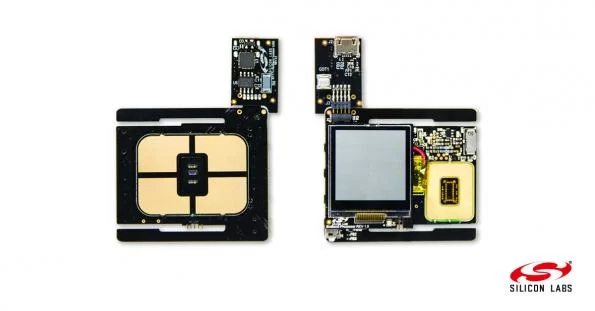Si117x sensor modules combine ultra-low power, high sensitivity and integration, for smart watches and wrist-based, patch-type and other wearables requiring long battery life and enhanced HRM accuracy. To simplify development and speed time to market, Silicon Labs offers a complete, end-to-end sensing solution featuring the Si117x sensor module, HRM algorithm, Wireless Gecko SoCs for Bluetooth connectivity, and a wrist-based development kit with sample code and example projects.
All-day HRM, Silabs asserts, is a key requirement for health and fitness wearables; the Si117x sensors consume less than 50 µA (sensor and LED combined) while performing continuous HRM. A built-in buffer and accelerometer synchronization capabilities save even more system-level power. The sensors’ power efficiency enables developers to use smaller batteries in wearable designs without significantly impacting the device’s battery life during continuous monitoring.
The Si117x sensors provide enhanced HRM accuracy with fast sampling speeds, a high signal-to-noise ratio (SNR >100 dB), and the ability to cancel out ambient noise and erroneous data, resulting in high-quality signals that make it easier to track heart rates despite challenging physiologies, varying skin tones and the presence of tattoos. A more accurate view of the HR waveform enables biometrics beyond traditional HRM, including heart rate variability (HRV), stress analysis and pulse volume.
By combining ECG measurements with optical HR measurements, Silabs says, the Si117x sensors allow developers to unlock new potential biometrics for wearables. The ECG waveform is the gold standard for cardiac measurements, and the Si117x sensors bring this capability to wrist-based wearables in a cost-effective, power-efficient manner. By making measurements in the same device and at the same time, the Si117x sensors allow developers to combine biometrics with optical photoplethysmogram (PPG) measurements to derive physiological parameters.
Each module supports up to four discrete LEDs (all of which can be driven simultaneously), and its four LED drivers are independently programmable (from 1.7 to 310 mA). Additional built-in features include a photodetector.
Read More: Biosensors with ECG function for heart rate monitoring in wearables


